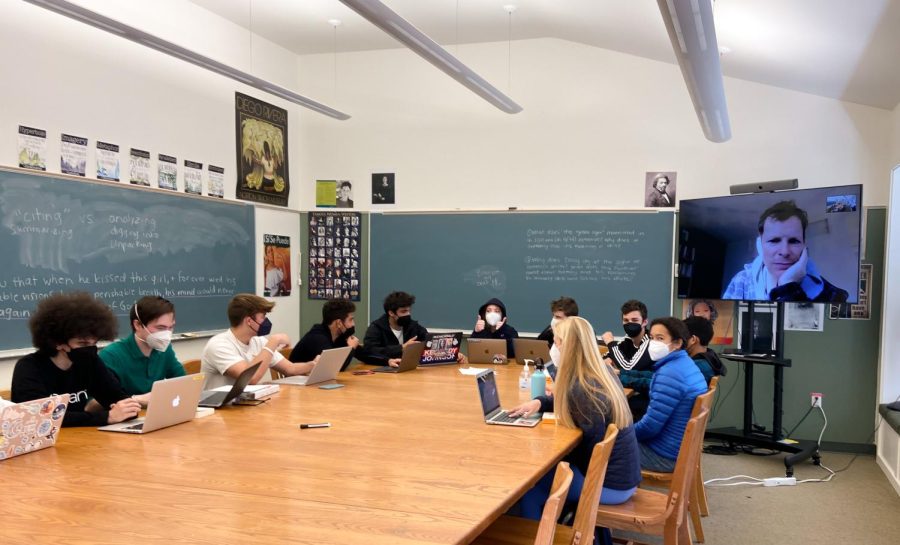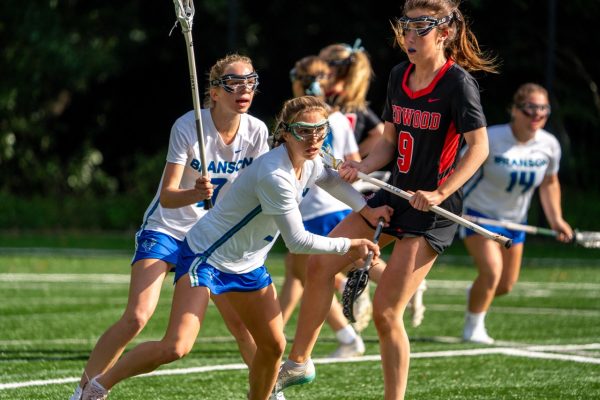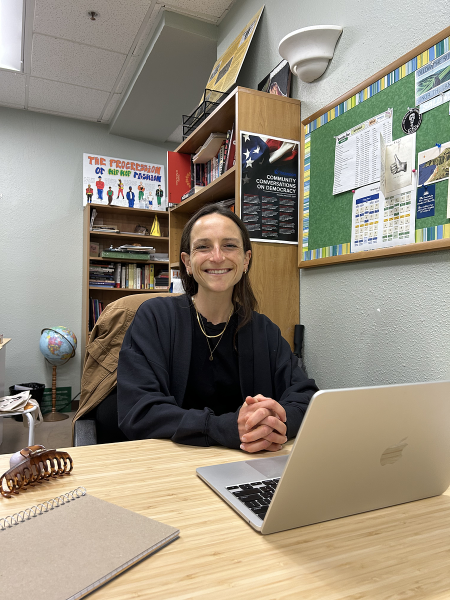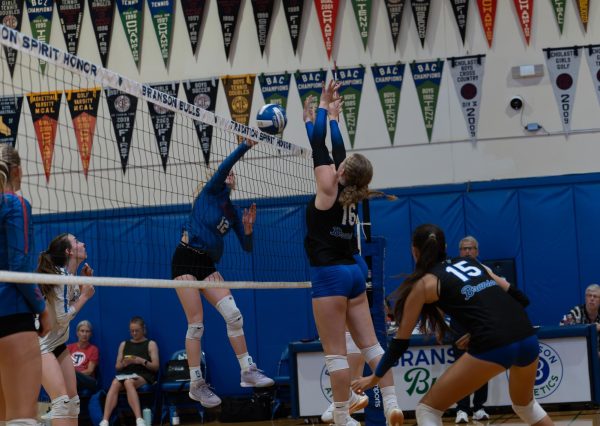Omicron surge brings remote learners’ experiences to fore
English instructor Giles Scott teaches virtually in January 2022. Some teachers and students went remote because of the omicron COVID-19 variant.
January 29, 2022
Since the start of the new year, there has been a drastic increase in the number of Zoom learners due to the recent omicron surge.
Students have been in and out of on-campus classes because of COVID-19 exposure and close contacts. The past couple of weeks have been a stressful time for teachers and students alike, but recently the amount of remote learners has decreased.
“We’ve been told that the omicron variant should plateau in late January, which is great news,” said Emily Easom, Branson’s COVID-19 coordinator. “We are heading in the right direction.”
While the omicron variant plateaus in the Bay Area, the Branson community continues to follow safety protocols strictly, including new masking policies. The rules now require students and teachers to wear CDC-approved masks to school, effective Jan. 21. Easom said masks will be a part of our “daily wardrobe” for a long time because of their overall effectiveness in reducing COVID-19 transmissions.
With many students cycling in and out of school, the connection between student and teacher has faced large impacts.
Mandarin teacher Jasmine Xiang has had multiple remote students in January. Xiang wants the best for her students but noted that “remote students can’t have the same effect as they are in the classroom and in person.” To compensate for the hardships that remote learners face, Xiang tries “to give them more help and support either online or in-person when they return to school.”
It does not seem like Branson has any plans to shift programs online.
“Our main goal is to keep our students in school,” Easom said. “Studies have shown that schools are an extremely safe place to be.” She also added that all-school remote learning is not currently an option.
Ishwar Jayaraman, a freshman, and Kaden Gustafson, a sophomore, were both on Zoom for one to two weeks because they contracted COVID over winter break. Both Gustafson and Jayaraman said that with the omicron surge being relatively unexpected, the structure of their classes did not change enough.
“I think that being on Zoom affected my learning experience in a negative way because it made it more difficult to learn the class material,” Jayaraman said. “While I was still learning in my classes, I felt that it was more challenging to absorb the information I was being taught over Zoom.”
While learning over Zoom was hard, Jayaraman still appreciates his teachers’ efforts to include remote learners.
“I think that the teachers did their best to include us in the class. I appreciate how they would check in on us Zoom students to see if we were able to follow along with the lesson.”
Gustafson had a similar outlook. “The class structure was not as suitable for Zoom students and it would be hard to keep up with the in-person students.”
He added that, although the class structure was not adequate, his teachers still did try their best to include him throughout the lessons.
Gustafson said he hopes “omicron numbers will decrease, so fewer students will have to be stuck on Zoom.”







